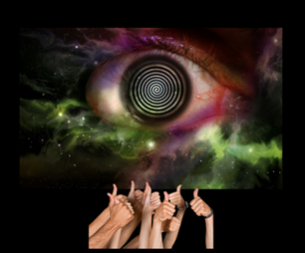The End of Numbing Out: Clients Reclaim their Lives with Hypnotherapy
The End of Numbing Out: Clients Reclaim their Lives with Hypnotherapy
“It’s only a little bit.” “It helps me to sleep better.” “I take it to ease my neck pain.” “Doesn’t everybody do that?” “It’s not really affecting my life all that much.” These are some of the things
clients say about the ways they “numb out,” that is, seek temporary respites from reality. While moderate use of substances that soothe stress and ease anxiety don’t usually cause problems,
many people cross a line and become addicted to them. Then, they do have problems. The problems constitute Substance Use Disorder (SUD), and client troubles mount rapidly.
The legalization of marijuana in many states, as well as the binge watching and overeating that took place during pandemic lockdowns, made it easy for people to excuse themselves as they
sought to get a buzz from one thing or another. Who could blame them for trying to forget about the things going on around them?
The increase in these behaviors led to a rise in the number of people who sought treatment for addiction. According to the CDC as cited in this post from the APA, during the pandemic 13% of
Americans reported starting or increasing substance use as a way of coping with stress or emotions related to COVID-19.
While the pandemic is no longer at the forefront of most people’s thoughts, the uncertainty and anxiety it produced has not let up. Now there are wars, shortages, and threats to society that
provide similar impetus to find ways of numbing out. The crises that arise in many clients with SUD often lead them to therapy
Getting to the Source Alleviates Addiction
Most people who abuse substances, from chocolate to dilaudid, will tell you that they don’t understand why they have these cravings. That is because the addictive impulse is so often
locked in the subconscious part of the mind. The addict knows, consciously, that what they’re doing is harmful, but they continue, even when the consequences are devastating to their lives
as well as those of their loved ones.
Any time a person can’t understand a certain behavior, talk therapy alone can take a very long time to have a positive effect. It is much easier to help them change their ways by giving them
ways of understanding the why behind their behavior. This is achieved through hypnotherapy as well as hypnosis.
Most people have heard about seeing a hypnotist to stop smoking or to better control one’s intake of food. The hypnotist places the individual into a light trance state, and then offers
suggestions. They might use Neuro Linguistic Programming (NLP) to create aversion to certain associations, or to help the client discover a pleasant state of mind that is only possible when
the urge to use the substance is under control.
Heart-Centered Hypnotherapy® goes one, very important, step deeper. The hypnotherapist helps the client discover the emotions that are experienced when the cravings come up. For
example, someone who is distressed about the state of the world could be feeling fear, sadness, or anger.
The client would then express the emotion over the current situation, and then be offered opportunities to revisit times in the past when the same emotion was felt. Age regression then
helps the client retrieve memories they might have forgotten, or tried to suppress, that provoked the same or similar feelings.
Expressing the emotions in the regressed state allows them to be released. Old decisions the client made based on traumatic events, such as “I’m helpless,” or “I’m weak” can be
transformed. The client can be offered the opportunity to reclaim parts of the self such as freedom or self-control.
This process allows the addict to understand what is at the source of the craving, what it is about the current situation that brings up those old memories, so that it can be managed.
Healing occurs when the adult part of the client is given the chance to soothe the inner child with behaviors that are constructive and healing, rather than impulsive and destructive.
Learn Hypnotherapy in Less than a Week at The Wellness Institute
This brief description of how hypnotherapy - and hypnosis - can be used to help clients overcome their impulse to numb out is only the beginning. The Six Day Hypnotherapy Training
and Certification Program offered online by The Wellness Institute will give you tools to help clients with addiction as well as other issues, such as
- Co-dependency
- Sexual Abuse
- PTSD
- Eating Disorders
- Relationship Addiction
- Mind-Body Afflictions
The course is taught online over six days with live teachers and real time interaction with your cohorts. Each participant gets two opportunities to practice as therapist and observer, and to
experience the healing power of hypnotherapy first hand, as a client. Certification in both hypnotherapy and age regression is awarded after participants complete a number of sessions
after the training ends. Supervision is available post-training to assist those who want to fine-tune their skills.
If you believe you’d rather stick to a more simple method, such as basic hypnosis, then the Introduction to Hypnosis course is just what you need. This is a two-day seminar, taught online
by a live teacher. You will learn how to induce trance, offer suggestions, and bring clients back to a normal waking state.
This class also involves hands-on experience as a hypnotist, client, and observer. You will learn how to put together short sessions for your clients involving everything from ending a bad habit
to alleviating physical discomfort.
The Wellness Institute is a community of thousands of therapists who are dedicated to combining their clinical skills with a full awareness and reverence for the entire human
experience. The decades of experience The Wellness Institute has accrued in training hypnotherapists ensures that you’re getting the finest training available. Perhaps the best part is
that you’ll get a chance to experience the healing power of hypnotherapy yourself.
Don’t delay - classes for 2024 are filling up fast!









